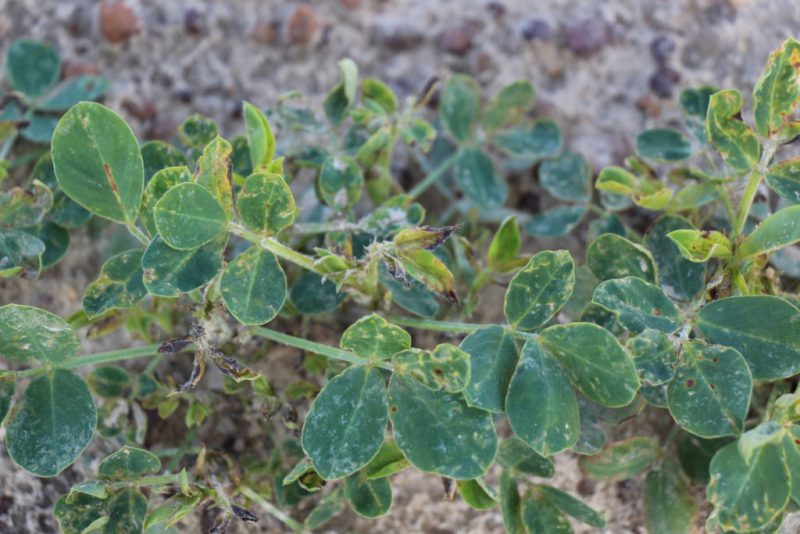Dr. Mark Abney, UGA Peanut Entomologist
Thrips populations are currently high on volunteer peanuts in Panhandle fields that are being burned down for planting; the plant injury is obvious. I will make this post as straight forward as I can. UGA research shows that for every 1% Tomato spotted wilt Virus (TSWV) incidence in GA-06G at the end of the season, peanuts lose 20 pounds of yield per acre.
Most thrips management options and all TSWV management options end when the seed furrow closes. Early planted peanuts (prior to 10 May) are at increased risk to thrips injury and TSWV. Phorate (Thimet) is the only insecticide that reduces the risk of TSWV in peanut. It doesn’t matter how much we wish there was something else, there is not.
Everything costs more in 2022, and most people are looking for ways to save money. Consider this: every peanut field in Georgia in 2022 will be infested with thrips, and some of those thrips will be infected with TSWV...100% chance. Thrips and TSWV management may not be the place to cut costs.
Using Peanut Rx will help growers assess TSWV risk and identify practices that can reduce risk. We can do everything right and still have TSWV, but if we plant in high risk situations, there should be no surprise when virus symptoms start to show up in June and July.
Our one chance to get thrips and TSWV management right, is now. Let’s not mess it up. If you have questions about thrips or TSWV management or any other insect management issue in peanut, please contact your local Extension Agent.
–
If you would like to sign up for Dr. Abney’s UGA Peanut Entomology updates and receive blog notifications, fill out the form on the right side of his blog site:
UGA Peanut Entomology
- Where Did That Weed Come From? The Importance of Weed Management Practices and Timings - December 5, 2025
- Sustainable U.S. Peanuts Kicks Off 2025 Crop Enrollment - December 5, 2025
- Grant Opportunity Available to Attend American Forage & Grassland Council Conference, Ashville – January 12-15 - December 5, 2025

